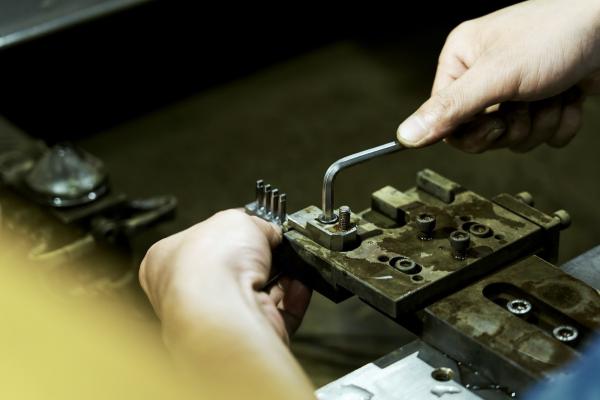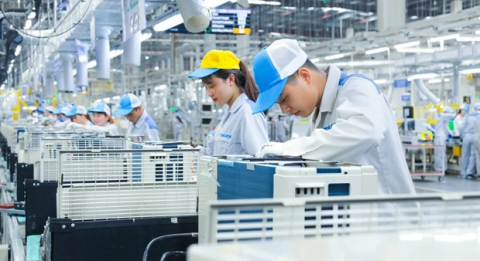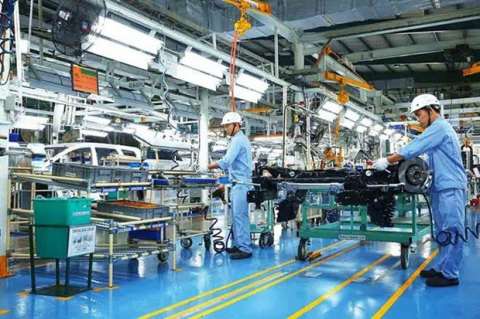Improve the localization rate of the mold industry from technology solutions
Vietnam’s mold industry is having more and more opportunities for strong development. The demand for molds for plastic production, mechanics, machine parts, components… to improve product quality is huge, helping domestic enterprises increase their capacity to participate in the global supply chain.
Mold making is an auxiliary industry that is the foundation for modern industrial development. Many manufacturing industries today have a need for molds.
Low competitiveness
In fact, our country’s mold industry has been experiencing remarkable growth over the years and is increasingly being modernized, innovated and made constant progress.
According to statistics released by the Department of Technology Application and Development – Ministry of Science and Technology, the value of the mold industry in Vietnam is about 1 billion USD/year, with a growth rate of 18%/year. five. Vietnamese mold companies are mainly concentrated in Hanoi and Ho Chi Minh City. Ho Chi Minh City, these are also two major economic centers, focusing on many businesses that are customers of the mold industry such as plastic, packaging, mechanical engineering, etc. Notably, Vietnamese mold enterprises can only produce enough products. Export level 3, 4, import level 1, 2. Of the products that can be produced, only about 8.5% of injection molds, the rest are stamping molds.

Mold products are indispensable tools in many industrial production industries.
In Vietnam, there are currently 355 FDI enterprises investing in manufacturing molds to serve international corporations such as Samsung, Hyundai, Toyota, Canon, etc. In a number of industries such as high-end electronic equipment, aviation… Vietnam still has to import high-tech molds from Japan and Malaysia that cannot be produced domestically.
According to economic experts, our country’s mold manufacturing industry has made positive changes, but there are still many limitations that affect the development speed. In which, limited technological capacity, shortage of high-quality human resources are among the difficulties that mold engineering enterprises are currently facing.
Many businesses have not invested properly and synchronously, so there are quite simple molds that cannot be produced. Like the front bumper of a car, it is easy to look at, but it is necessary to have safe machinery and materials in parallel with the production, design, and purchase of raw materials and accessories…
Mold manufacturing technology is also slowly transferred, lacks synchronization in investment in machinery and equipment, leading to the overlap between new and old technologies, affecting production efficiency. Domestic mold manufacturing enterprises currently mostly operate in a closed state, without coordination or association with each other to design and intensively manufacture one or several items of the same category, so even Some units have invested in a number of relatively modern technology lines, but there are overlaps that cause scattered resources. Also due to small-scale production, even alloy steel imported to make molds has a very high price. This explains why the cost of mold production of Vietnamese enterprises is always high, leading to limited production efficiency as well as limited competitiveness.
In addition, technology is also a factor that affects the level of human resources, which has a significant impact on the development of enterprises.
Focus on investment and technology development
The demand for molds for plastic production, mechanics, machine parts, components… to improve product quality is huge, helping domestic enterprises increase their capacity to participate in the global supply chain. Therefore, the mold industry is attracting the attention of many domestic and foreign enterprises.
Deputy Minister of Industry and Trade Do Thang Hai said that at present, mold production is developing in the direction of focusing on investment and technology development. With the ability to produce products in large quantities, short production times, and high levels of stability, molded products are indispensable tools in a wide variety of industrial production, from household appliances to modern electronics and aviation products.
In the world, mold manufacturing technology is almost complete for all kinds of composite stamping dies, claw stamping dies and molds used for plastic injection molding technology. In the automotive industry, businesses have widely applied these molds to make body parts, trunks and interior and exterior details. In particular, in the modern mold manufacturing industry, CAD/CAM/CNC technology and many modern software tools have been applied, helping to quickly convert from traditional production to industrial production. turmeric. Thus, in order to quickly raise the localization rate and help improve the competitiveness of Vietnam’s mold industry in ASEAN in particular and the world in general, the research and mastery of advanced technologies must be considered. , from which it is very necessary to actively design and manufacture molds in the country.
The mold making industry has high automation, complex technical requirements and high precision. Therefore, it requires a much higher level of human resources. According to Mr. Nguyen Van Tri – Director of Lap Phuc Co., Ltd., the requirement of mold mechanics industry is fast, so it requires enterprises to have a strong design team, and the processing resources must be elite to be able to focus design and manufacture in a short time. Therefore, high-quality human resources are extremely important for mold mechanics enterprises.
The state as the “sponsor” for the mold industry needs to grasp, develop and implement a clear and specific development roadmap. Thereby, helping the process of modern technology transfer be carried out more quickly and effectively.
Mold manufacturing enterprises that are subjects in the development process need to actively plan and develop development directions in accordance with the actual situation, ensuring the improvement of human resources for production and transfer of new technologies.
Source Tap chi Co khi

 EN
EN
 VI
VI



